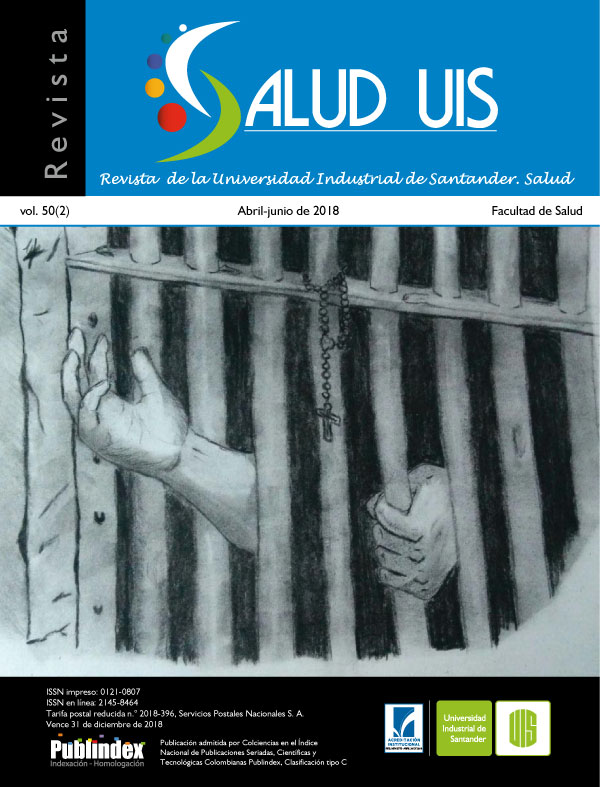Abstract
Introduction: The population in the large cities has cultural elements that are hardly incorporated in health education interventions. Objective: To identify the key elements for designing culturally competent strategies necessary to improve health education sessions, physical activity and food intake for people at risk of chronic non-communicable diseases (NCD). Methodology: A qualitative, exploratory and descriptive study was performed in Mexico City. Focal group technique was used. Thematic script included topics such as: a) causes of the disease, its prevention and treatment; B) elements for disease prevention: diet and physical activity; C) motivations to participate in an intervention that prevents NCD in their own cultural context; and d) Elements that do not work in an intervention to prevent NCD. The interviews were recorded, transcribed and analyzed under the fundamental theory approach. Results: Data showed that one of the most important impediments is the lack of time to attend health education sessions, physical activity and healthy foods preparation and consumption. Within the groups, obesity and weight were not perceived as an important factor for the development of NCD. We proposed to incorporate thanatological and logotherapeutic elements in the interventions in order to give live meaning to people´s health. Conclusion: Strategies are proposed to move from health promotion to human development, integrating elements of effective management of time, emotional intelligence, increased self-esteem and family strategies of collaboration.
References
2. Medina C, Janssen I, Campos I, Barquera S. Physical inactivity prevalence and trends among Mexican adults: results from the National Health and Nutrition Survey (ENSANUT) 2006 and 2012. BMC Public Health. 2013; 13: 1063. doi: 10.1186/1471-2458-13-1063.
3. Barquera S, Campos I, Rivera JA. Mexico attempts to tackle obesity: the process, results, push backs and future challenges. Obes Rev. 2013;14 (Suppl 2):69-78. doi: 10.1111/obr.12096.
4. Organización Mundial de la Salud. Informe sobre la situación mundial de las enfermedades no transmisibles 2014 “Cumplimiento de las nueve metas mundiales relativas a las enfermedades no transmisibles: una responsabilidad compartida”. Ginebra: Organización Mundial de la Salud; 2014: 1-16 p.
5. Watt K, Abbott P, Reath J. Developing cultural competence in general practitioners: an integrative review of the literatura BMC Fam Pract. 2016; 17: 158. doi:10.1186/s12875-016-0560-6.
6. Betancourt JR, Green AR, Carrillo JE, Ananeh Firempong O. Defining cultural competence: a practical framework for addressing racial/ethnic disparities in health and health care. Public Health Rep. 2003; 118(4): 293-302. doi: 10.1093/phr/118.4.293.
7. Betancourt JR. Cultural competency: providing quality care to diverse populations. Consult Pharm. 2006; 21(12): 988-995.
8. Harris J, Springett J, Croot L, Booth A, Campbell F, Thompson J, et al. Can community-based peer support promote health literacy and reduce inequalities? a realist review. Public Health Res. 2015; 3(3): 85-90.
9. Work Group for Community Health and Development. Building culturally competent organizations. Kansas: University of Kansas; 2010.
10. Kornblit AL, Beltramino F, Metodologías cualitativas en ciencias sociales: modelos y procedimientos de análisis, 2ª edición, Buenos Aires: Biblos Metodología; 2007.
11. Hamui SA, Varela M. La técnica de grupos focales. Inv Ed Médica. 2013; 2(1): 55-56.
12. Lincoln Y, Guba E. Naturalistic inquiry. United States: Sage Publications, 1985: 42-44.
13. Blumer H, Symbolic Interactionism: perspective and method, Englewood Cliffs, New Jersey: Prentice- Hall; 1969.
14. Vasilachis I. Estrategias de investigación cualitativa. España: Gedisa; 2006
15. Blanco M. El enfoque del curso de vida: orígenes y desarrollo. Rev Latin Población. 2011; 5(8): 5-31.
16. Frenk J, Gómez-Dantés O. Healthcare or sickcare: reestablishing the balance. Salud Publica Mex. 2016; 58(1): 84-88.
17. Jongen CS, McCalman J, Bainbridge RG. The implementation and evaluation of health promotion services and programs to improve cultural competency: a systematic scoping review. Front Public Health. 2017; 5: 24. doi: 10.3389/fpubh.2017.00024.
18. García B, Pacheco E. Uso del tiempo y trabajo no remunerado en México. México: El Colegio de México, ONU-Mujeres, Inmujeres; 2014: 586 p.19.
19. Carrasco Henríquez N. Desarrollos de la antropología de la alimentación en América Latina: hacia el estudio de los problemas alimentarios contemporáneos. Estud Soc. 2013; 21(41):186-209.
20. Morales MC, Méndez HI, Shamah T, Valderrama Z, Melgar H. La inseguridad alimentaria está asociada con obesidad en mujeres adultas de México. Salud Publica Mex. 2014; 56(1): S54-S61.
21. Rodríguez RC, Salazar JJ, Cruz AA. Determinantesde la actividad física en México. Estudios Sociales 2007; 16(30): 79-101.
22. Morales MC, Hernández B, Gómez LM, Shamah T, Cuevas L. Obesidad, sobrepeso, tiempo frente a la pantalla y actividad física en adolescentes mexicanos. Salud Publica Mex 2009; 51(4): S613-S620.
23. Colchero MA, Caro Y, Kaufer M. Socioeconomic status and misperception of body mass index among Mexican adults. Salud Publica Mex. 2014; 56: 251-258.
24. Moreno JA, Moreno R, Cervelló E. El autoconcepto físico como predictor de la intención de ser físicamente activo. Rev Psicod Salud. 2007; 17(2): 261-267.
25. Ziccardi Contigian A. Programa Ordenamiento de la Zona Metropolitana el Valle de México. México: Programa Universitarios de Estudios sobre la Ciudad-Universidad Nacional Autónoma de México; 2012: 29 p.
26. De la Torre JC. A turning point for Alzheimer’s disease? Biofactors. 2012; 38(2): 78-83.
Se autoriza la reproducción total o parcial de la obra para fines educativos, siempre y cuando se cite la fuente.
Esta obra está bajo una Licencia Creative Commons Atribución 4.0 Pública Internacional.
